Your majestic memories: ‘I put the future king under the dining table’
Many thousands of people have cherished recollections of their encounters with the Queen, who chalked up more than 21,000 official engagements. Here, Australians recall their brush with royalty.
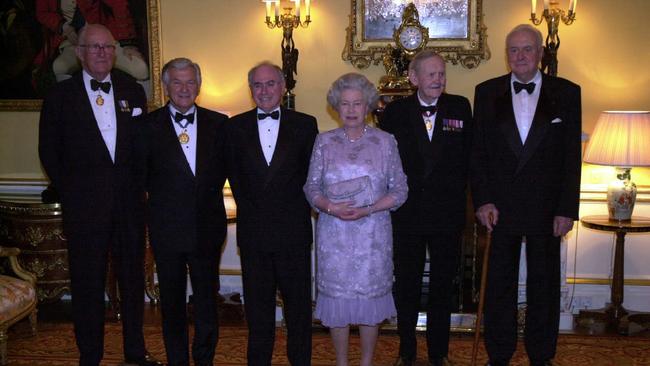
Elizabeth helped an Australian woman make British history
In arrangements for the Queen’s funeral, King Charles has demonstrated both high respect for centuries-old tradition and the British capacity to subtly amend tradition. I have had personal experience of such subtle changes.
When prime minister John Howard asked me as high commissioner to make arrangements in London to celebrate the centenary of the passage of Australia’s Constitution through the British parliament in July 1900, he made arrangements for the Federation Guard to come to London at that time. The guard included men and women from the three services. When it was suggested that the Federation Guard might change the guard at Buckingham Palace, elements of the British Army (but not the then Chief of the Defence Force Sir Charles Guthrie and not prime minister Tony Blair) opposed this on the grounds that women had never been involved in changing the guard at the Palace and to do so would be a breach of tradition.
Arrangements for the centenary were discussed with the Queen. These included a private dinner she would host for the five Australian prime ministers who would visit London, and her attendance at a service for Australia at Westminster Abbey. She also mentioned the Federation Guard. She said she had heard of the concerns of some in the British Army who had suggested that, in addition to questions of tradition, it was not possible to let our Federation Guard into the palace because the guards’ quarters had no female toilets. She said she wanted women involved and had directed that female toilets be constructed immediately. Australian Army Captain Cynthia Anderson of the Federation Guard, in July 2000, became the first woman to lead the changing of the guard at Buckingham Palace. She did this with such precision, authority and dignity she was featured prominently by the major UK media. The Queen enjoyed this immensely.
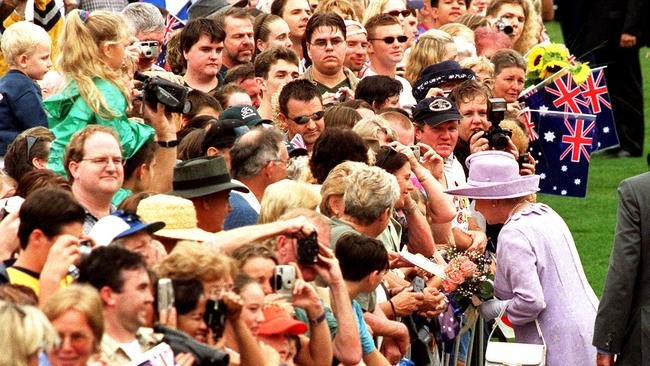
This event and many others just added to the trade, investment banking and cultural objectives Howard and his government had in celebrating that we did not have to struggle or fight for our Constitution, the only struggle was among state premiers.
Australian high commissioners have always had access to the monarch. I met the Queen on 11 occasions. Shortly after arriving in London, my wife and I were invited to have morning tea with the Queen. No one else was present.
In advance of the audience her lady-in-waiting advised that the Queen had changed the rules for such occasions. Whereas previously only the Queen asked questions, the new protocol was that the Queen would ask the first question and thereafter I and my wife would be free to ask or discuss anything at all. To highlight the relaxed formality of a 45-minute occasion the Queen began the audience: “Tell me, High Commissioner, is Alan Bond still in jail?” I told her he still had over one year to go.
The centenary of Federation marked the only occasion five Australian prime ministers – Howard, Hawke, Fraser, Whitlam and Gorton – simultaneously met the Queen over a private dinner at Buckingham Palace. All knew the Queen much better than I and all had experienced her warm friendship, witty conversation and sense of humour. When the time came for a group photo Bob Hawke joyfully positioned himself immediately beside the Queen. He was gently told that as the incumbent this was John Howard’s place.
After the death of the famous violinist Yehudi Menuhin, a memorial service was held at Westminster Abbey. The Queen was unable to attend and in a departure from tradition asked Dame Joan Sutherland to represent her. As the Queen’s representative, Dame Joan was ranked first ahead of then Prince Charles and several crowned heads of Europe.
Philip Flood, Former Australian high commissioner to the UK
How I put the future king under the dining table
When Prince Charles came to Australia in 1977 to represent Queen Elizabeth for her Silver Jubilee, my late sister, Liz Rice, was asked by Lady Tryon to host a dinner party in honour of the future king. This dinner was to take place prior to a ball at the home of Lady Tryon’s parents in Toorak.
There was a huge air of excitement leading up to this event. Queues of onlookers lined the street outside my sister’s home. Inside, our children were allowed to meet the prince.
One of my daughters, Sarah, was wearing a tartan skirt in the prince’s honour. Charles was quick to tell her she was wearing it back to front. Sarah immediately burst into tears.
As this was happening, I couldn’t help but notice the beautiful black velvet slippers that Charles was wearing and the large gold crest on the front of them.
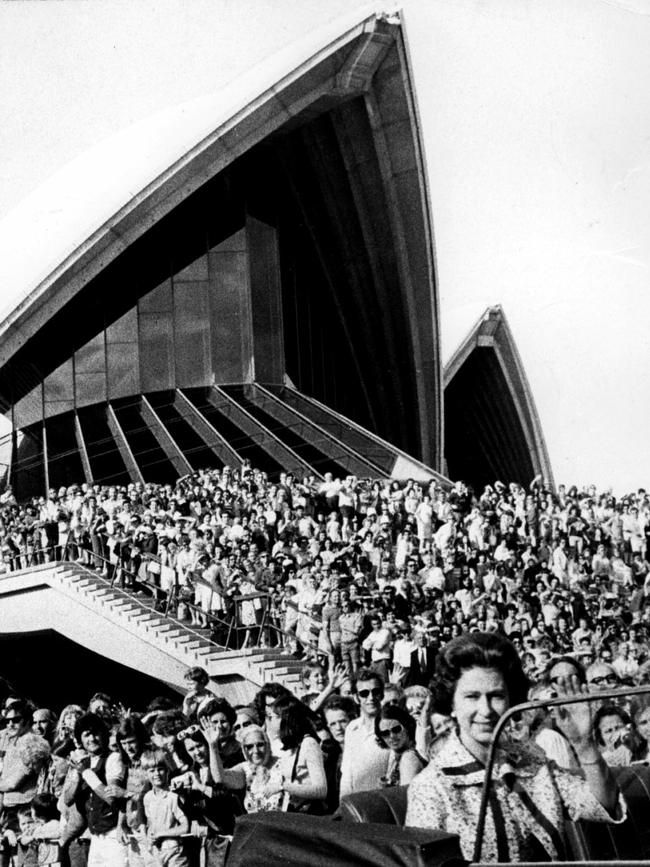
Before we sat down to dinner we were instructed that for the first two courses we were to speak to the person on our right and then for the following two courses we were to speak to the person on our left.
A white-gloved waiter stood behind the chair of each guest.
I was seated on the right of Prince Charles and my sister sat on his left.
When the main course arrived, I was astonished to see that there was a rack of lamb consisting of six cutlets and a large skinned tomato. (Prince Charles had made it known during his time at Timbertop that he was very fond of Australian lamb.)
To my horror, as my fork went into the skinned tomato, it left my plate and rolled under the table under Princes Charles’s feet.
My first thought was that it had ruined my dress for the ball. Fortunately, it hadn’t. I continued to be in deep conversation with the guest on my right and quickly decided to ignore the accident.
Suddenly I remembered the prince’s velvet points, and I became worried that the tomato was under Charles’s feet.
I decided to interrupt Charles in his conversation and of course my sister glared at me.
“How dare you break protocol.” I explained about my tomato and suddenly Charles’s chair was empty. He was under the table retrieving my tomato.
All formality for the rest of the dinner went out the window.
In the thank you letter Prince Charles sent to my sister, he wrote that there would always be a little tomato on his dancing points which would remind him of this very happy occasion.
Prince Charles was so young and full of life. He has been rewarded for his long wait.
Ann Bennett, Armadale, Vic
Receiving the royal wave at full gallop
As a young lad of 12, I was excited to hear the Queen was visiting the Yarra Valley in 1954 to stay at Warburton. I set all our gates open and prepared my route on our property that ran alongside the train tracks.
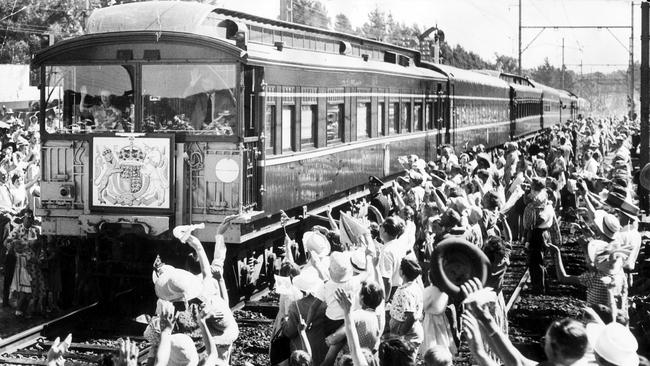
I saddled Norrie (my horse) and waited. Upon the train meeting our place I galloped the full length of our boundary, 200m, waving to Queen Elizabeth. She came out on to the carriage observation deck and waved back.
Reflecting upon this I hope she enjoyed my jubilation and horsemanship. It was a joyous event.
Neil Stoney “Yarramundi”, Woori Yallock, Vic
Ashtray to remember day I met Queen, Philip
With a 40-year media career working in newspapers and glossy magazines, I’ve had the privilege and opportunity to meet many global celebrities, fashion designers, models, actors and sports people.
But the day I met the Queen is one I’ll never forget.
As a 15-year-old girl from Penguin in North West Tasmania, I was among a small group of local Girl Guides who, in 1976, successfully completed their Queen’s Guide Award. But the official presentation was postponed until the Queen’s visit during the Silver Jubilee Royal Tour the following year.
Consequently, my parents received an invitation from the then governor, Sir Stanley Burbury, and his wife, Lady Burbury, inviting us to a “gathering of representatives of schools and youth organisations”, which included the Queen’s Guide Award presentation, at Government House on the morning of March 15, 1977.
It was a Tuesday, and as a year 11 student at Marist Regional College, in Burnie, I was allowed the day off school. Dressed in my Girl Guide uniform, I joined my fellow Queen’s Guide recipients and students on the “rope line” for Queen Elizabeth and Prince Philip’s walkabout on Government House grounds. It was there that I shook hands and exchanged a few words with Prince Philip, dutifully several paces behind the Queen. It was all over in a moment.
After the walkabout, those receiving awards were ushered into Government House for the official presentation. As my name was called out, I approached the dais and curtsied to the Queen, who presented me with the metal Queen’s Guide badge and signed certificate. I remember practising my curtsy for weeks!
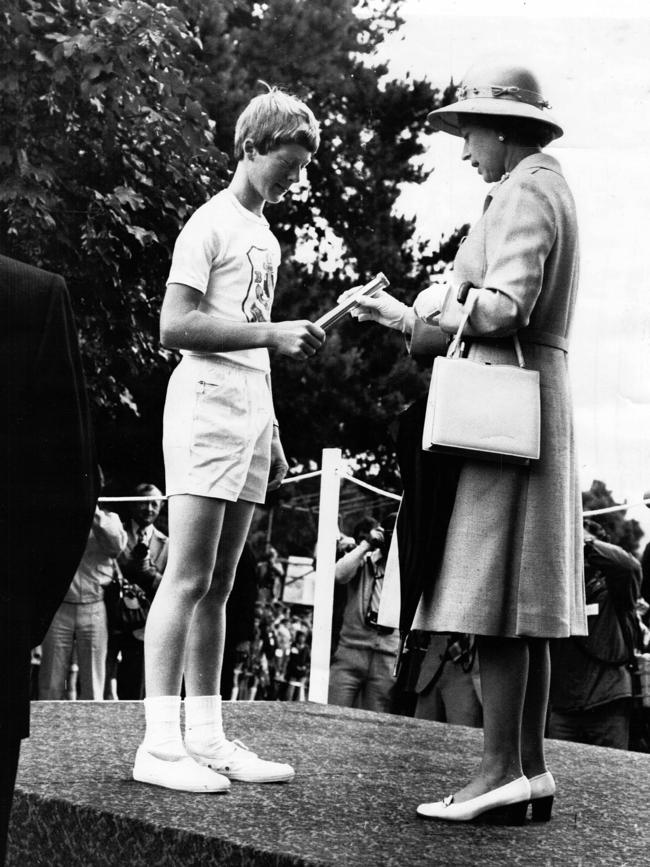
But speaking with my mother in light of this week’s sad news, I recalled that moment.
“I don’t remember you meeting the Queen,” my mother declared, much to my dismay.
For someone with a pretty good memory for random things, she had failed to recall one of the biggest moments of my life.
However, there was one small thing she hadn’t forgotten.
After the presentation, parents were invited in for a cuppa and light refreshments. Realising, perhaps, it would be his only visit to Government House, my father decided to mark the occasion by “souveniring” a Government House-embossed crystal ashtray. Understandably, my mother was mortified. Quelle horreur!
To think that, 45 years on, my father’s misdemeanour is all she remembers of that memorable day.
Anne-Maree Gale, Sydney, NSW
‘I did but see her passing by’
The overnight passing of Queen Elizabeth took me back to her visit in 1954 at which time I was seven years old and lived adjacent to the Sydney-Wollongong railway line in the southern suburb of Loftus.
Around mid-morning my parents and I were standing on our front porch as the train carrying the Queen passed by and I vividly remember Her Majesty standing and waving from the end platform at rear of the last carriage.
The Thomas Ford quote, “I did but see her passing by”, becomes all the more poignant for me on this very sad occasion.
David Spratt, Mosman, NSW
Historic moment for princess … and world
February 1952 was a significant time in English history. On February 1, the Princess Elizabeth and her husband, the Duke of Edinburgh, arrived in Nairobi for a private visit.
They flew out in a BOAC Argonaut landing at RAF Eastleigh where they were greeted by the governor of Kenya, Sir Neville Mitchell and other dignitaries, including Air Commodore Pankhurst, the Air Officer Commanding East Africa.
On February 6, we were starting a survey in the Moyale area, when we received a signal from the UK, ordering us to return to base.
Little did we know that the news had just broken that King George VI had died. Princess Elizabeth was the new sovereign, as Queen Elizabeth II.
Ian Suren, Mt Eliza, Vic
Newlyweds blessed with view to a thrill
With the sad passing of Queen Elizabeth II, the experience my parents had during the 1954 royal visit to Hobart was interesting due to the position and locality of their first residence together. The newlyweds resided at Nettlefold’s Tower (now the Grand Chancellor) on Macquarie Street, on the route of the forthcoming royal procession.
Before the much-anticipated event, a local policeman had called to ask the names and addresses of those who would be taking advantage of the clear view, and who would be residing at the residence during the royal procession – an experience both would never forget, associated with a smile of remembrance.
Kenneth Gregson, Swansea, Tas
Breach of protocol met by her smiling eyes
A wonderful memory of 42 years ago when 160 members and senators were presented to Her Royal Highness in Kings Hall on May 26, 1980.
When I gently held her gloved hand and, sidestepping protocol, said “we are so delighted to have you with us” or some such, she very briefly responded, for a second or two, with her so-well-loved smiling eyes.
A remarkable personable connection with such a remarkable, gracious lady.
Sandy MacKenzie, Avenel, Vic



To join the conversation, please log in. Don't have an account? Register
Join the conversation, you are commenting as Logout